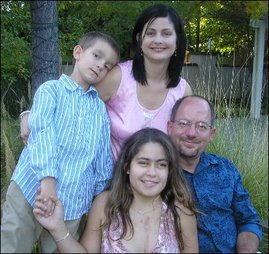
My favorite surgeon in the world, Dr. Rick Mainwaring recently explained Lexi's defect and repair to me. I "kinda" new but really didn't have a full understanding. Leave it to this man to explain something so perfectly.....
There are many types of DORV, everything from a close cousin to Tetralogy of Fallot, to the version that Alexia has (more complex, obviously) to some types where they are single ventricle patients. If the patient had a Kawashima, then they are almost certainly in the single ventricle category. Many patients with heterotaxy have DORV, and most of the heterotaxy/DORV patients need the single ventricle route of management. Parenthetically, it is our current belief that all patients with a Kawashima should have completion of their Fontan, a recommendation that we would not necessarily have made 10 years ago.
Alexia had a complex form of DORV, but had two well developed ventricles, so could go a two ventricle route. She had what is called an apical-aortic conduit—there is no name attached to this procedure, and it is not done very often anymore.
I am sure that it seems confusing that the name DORV, which sounds like it should be a single entity, turns out to be anything but. It would be analogous to calling something a car—that could turn out to be a Mercedes or a Hugo.
The reason I asked Dr. M this question, was because, I am emailed, almost daily, by families of children with DORV, trying to find out what Alexia had done.
Did I ever tell you how much I love this man??????
Alexia and Aden at the Zoo
Friday, April 4, 2008
Double Outlet Right Ventricle
Subscribe to:
Post Comments (Atom)






































1 comment:
Double-outlet right ventricle (DORV) is a rare heart defect. In a normal heart, the blood flows in from the body to the right atrium. It then goes into the right ventricle. Next, the blood travels to the lungs through the pulmonary valve. Here, it picks up fresh oxygen. The blood returns to the left atrium and goes into the left ventricle. The blood moves out to the rest of the body.
Normally, the aorta (the largest artery) comes from the heart’s left ventricle. But when DORV occurs, the aorta and the pulmonary artery are attached to the right ventricle.
Another heart defect called ventricular septal defect (VSD) usually occurs with DORV. VSD is a hole in the wall between the right and left ventricle. DORV can be categorized into several types depending on the position of the VSD.
Along with these conditions, the pulmonary valve may be narrowed. DORV is a serious condition. It requires care right away by the doctor.
http://www.heart-consult.com/articles/double-outlet-right-ventricles-dorv
Post a Comment